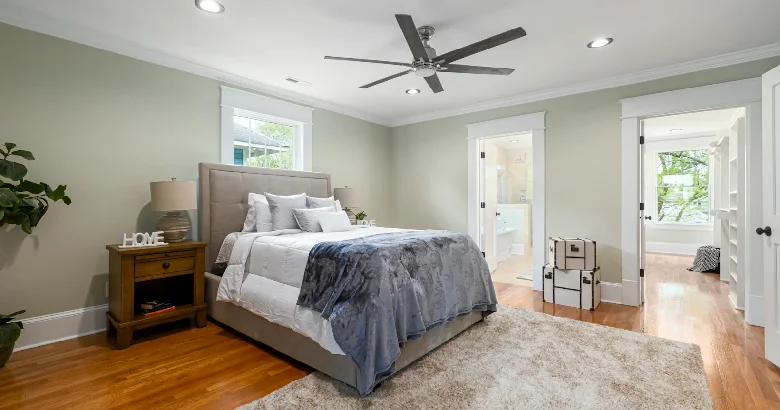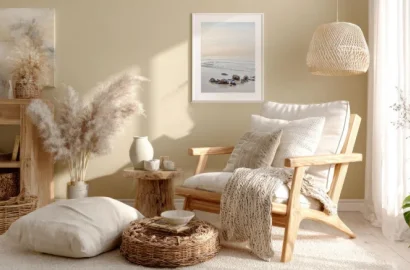Read on for our complete guide to designing a bedroom for better rest, and learn how a calming atmosphere and smart interior design choices can help you sleep better.
Having trouble clocking in those full eight hours? You’re not alone—and sometimes, it’s not just about stress or screen time. The way your bedroom is set up, from the lighting to your bedding and even the sounds around you, can make a big difference.
It’s not just about making it look good; it’s about creating a bedroom design that helps you unwind. So, how do you turn your room into a proper sleep sanctuary? Let’s get into the answer in detail, along with ideas you can incorporate easily.
Content:
- How interior design affects sleep
- How to design a bedroom environment for good sleep
- Top 10 bedroom design ideas
- Conclusion
- Next Steps

How interior design affects sleep
The design of your bedroom plays a key role in how well you sleep. Factors like lighting, temperature, noise, and overall atmosphere can all impact the quality of your rest.
For example, sleeping in a room with bright lighting can make it harder to unwind. Bright or overhead lights can interfere with the production of melatonin, the hormone that regulates your sleep cycle. Similarly, bold, vibrant colours on your bedding or walls might keep your mind active, while soft, calming tones promote a more peaceful, restful state.
This is why getting the interior design right for your bedroom is crucial to improving sleep and helps create a space that truly supports your rest.
How to design a bedroom environment for good sleep
Designing a bedroom environment for good sleep is about more than just making it look modern or aesthetically pleasing. It’s about building a space that supports relaxation, reduces stress, and promotes healthy sleep habits.
It is widely accepted that a well-designed bedroom can significantly improve your ability to fall asleep faster and have a more restful, uninterrupted sleep. From the colors on your walls to the placement of your furniture, every detail contributes to the overall atmosphere of your bedroom.
By thoughtfully incorporating elements such as calming lighting, high-quality bedding, soothing complementary colors, and a clutter-free layout, you can transform your bedroom into a peaceful retreat that encourages better and restorative rest. Whether you’re starting from scratch or making small upgrades, every design choice within your bedroom interior design has the potential to impact your sleep quality.
Here are the top 10 ideas you should consider implementing in your bedroom to create a better environment and improve your sleep.
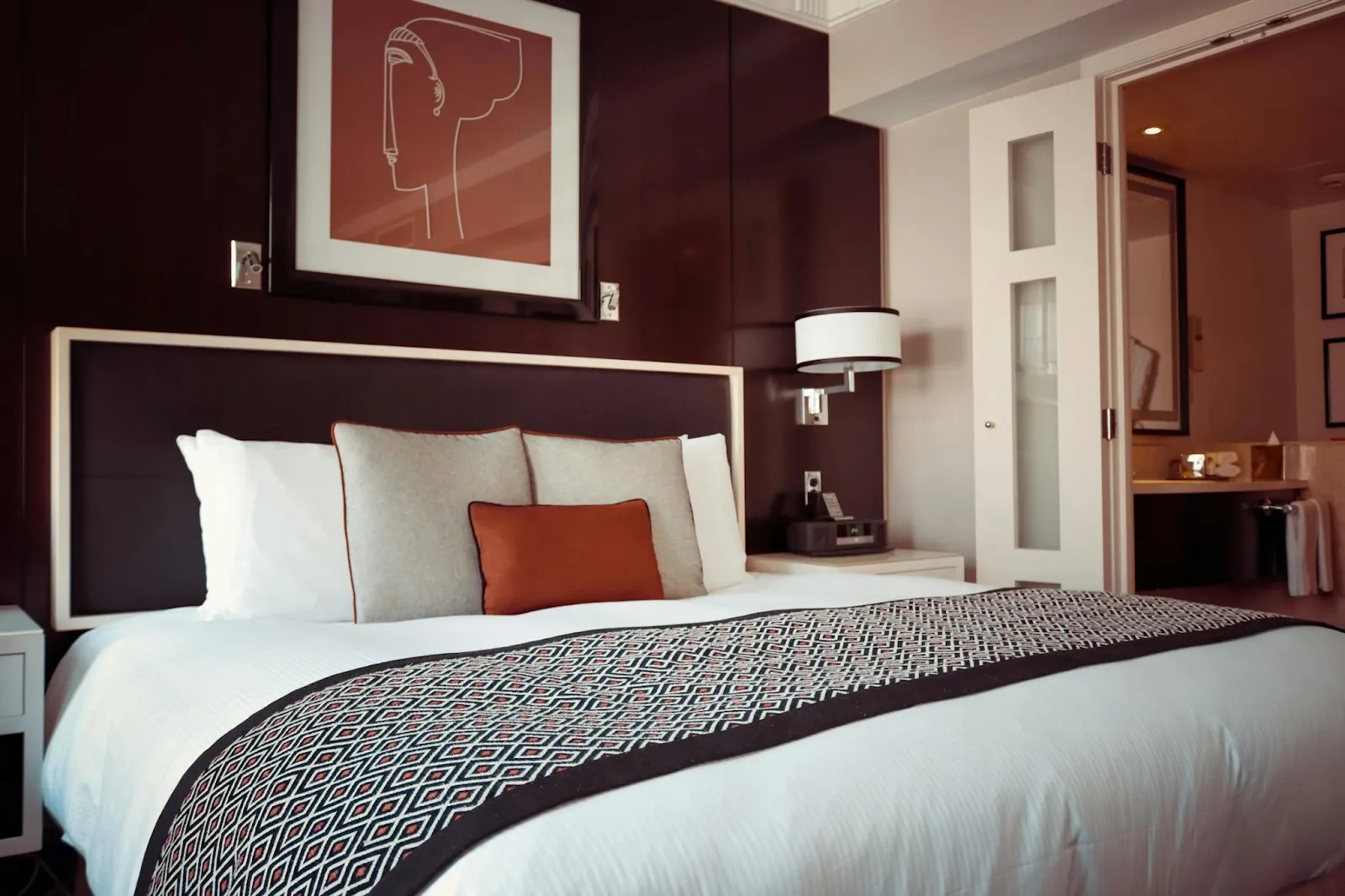
1. Choose soothing wall colors
The colour palettes you choose for your walls can truly shape the atmosphere of a room. When it comes to choosing the best bedroom wall color, soothing tones such as soft beige, light grey, sage green, or pale blue are ideal. These shades create a serene, cozy vibe that’s easy on the eye and mind.
Steer clear of loud or overly bright hues. A matte or eggshell finish will keep the look gentle and smooth. To tie everything together and give it a harmonious feel, coordinate your wall color with elements like curtains or bedding.
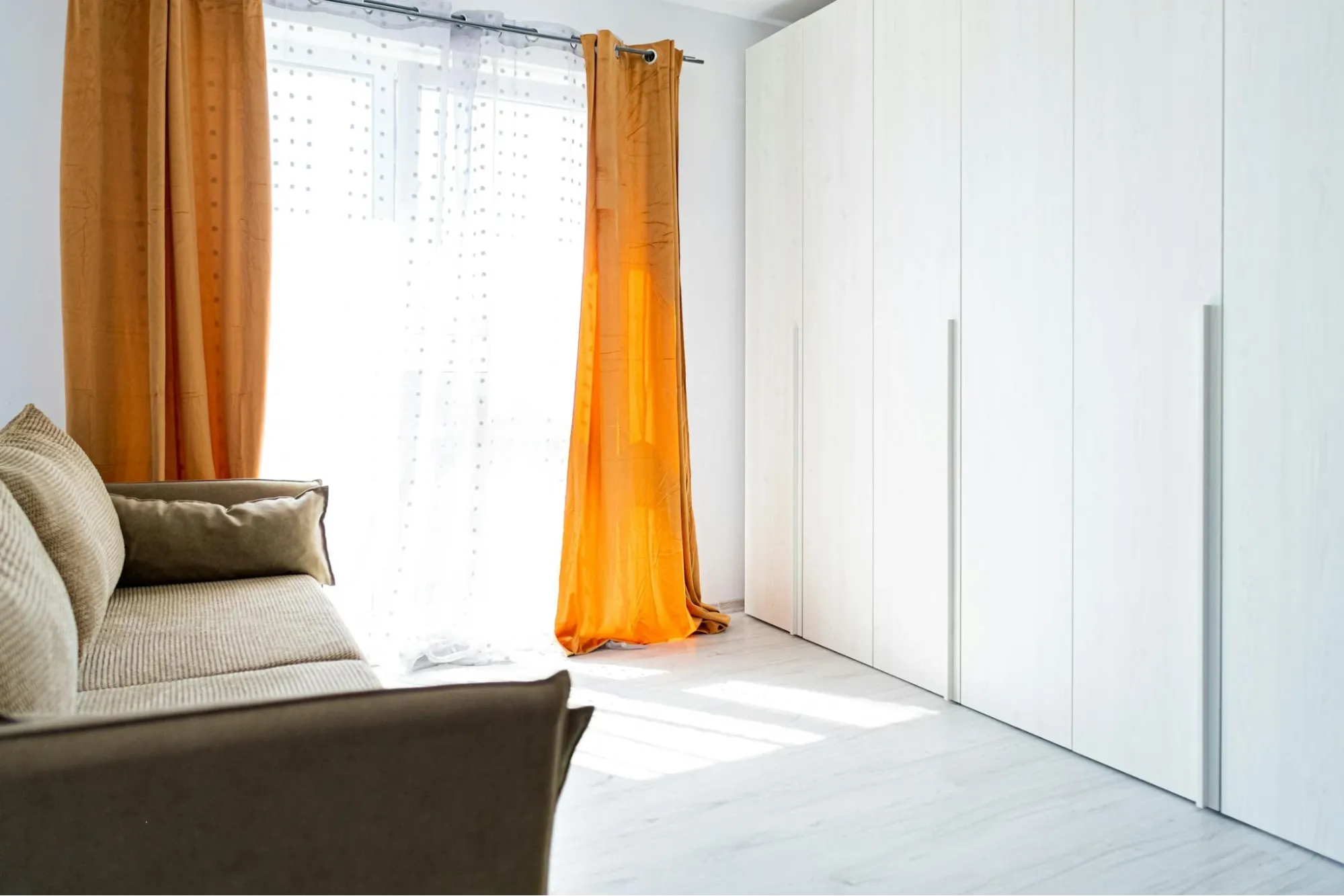
2. Use a blackout or layered curtain
The best bedroom designs for sleep often include layered curtains or blinds that block out harsh light and help muffle outside noise. Opt for blackout curtains to create a dark, cozy environment, perfect for blocking streetlights or the early morning sun.
If you’re after a softer, more layered look, consider pairing sheer curtains with heavier drapes. This way, you can control the light during the day while maintaining a peaceful atmosphere at night. Choose curtains in neutral or muted shades to ensure the room stays serene and welcoming.

3. Invest in quality bedding
Choosing the wrong bedding can lead to a night full of discomfort, restlessness, and frustration. Scratchy sheets, overly heavy blankets, or fabrics that trap heat can leave you tossing and turning, unable to get the restful sleep you need.
The best bedding for a good night’s sleep is the key to comfort, breathability, and support. Opting for soft, breathable fabrics like pure cotton or lyocell bed sheets, known for their moisture-wicking and temperature-regulating properties, can help you stay comfortable all night long. These fabrics promote air circulation and comfort, ensuring a cool, dry sleep experience.
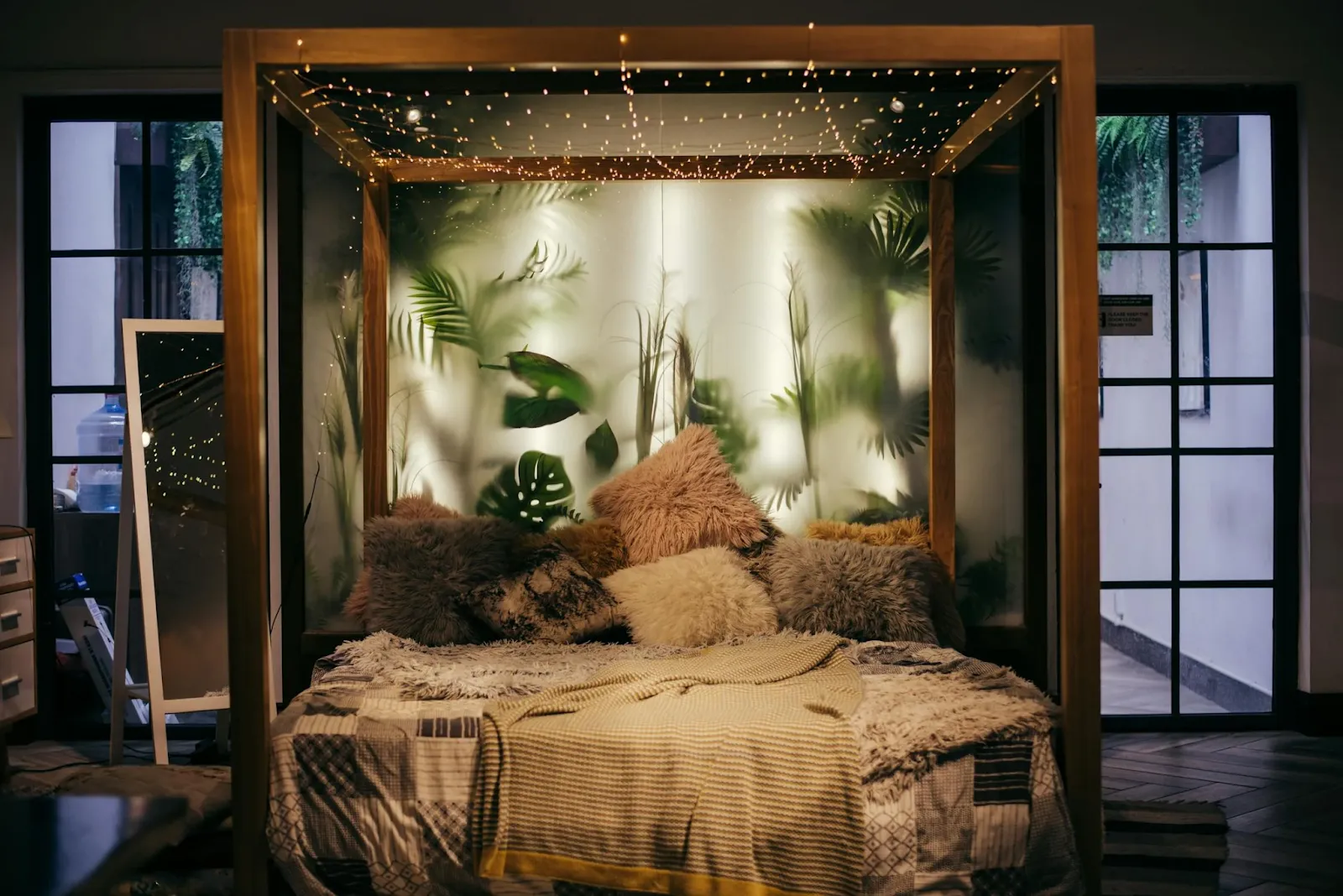
4. Keep the lighting warm and adjustable
The next thing you can focus on to improve your bedroom design is lighting. Just like natural light, the artificial lighting in your room plays a huge role in helping you unwind. Instead of relying on a single, harsh overhead light, think about how different kinds of lighting in bedroom spaces can create a more calming and inviting atmosphere.
Opt for warm, gentle lighting over stark, white bulbs. Bedside wall lamps or wall lights with dimmers are perfect for adjusting the mood, and a floor lamp or small light on your dressing table can add that extra touch of warmth. If possible, use smart bulbs or timers that gradually dim in the evening, as this signals your body that it’s time to relax.
5. Add natural elements
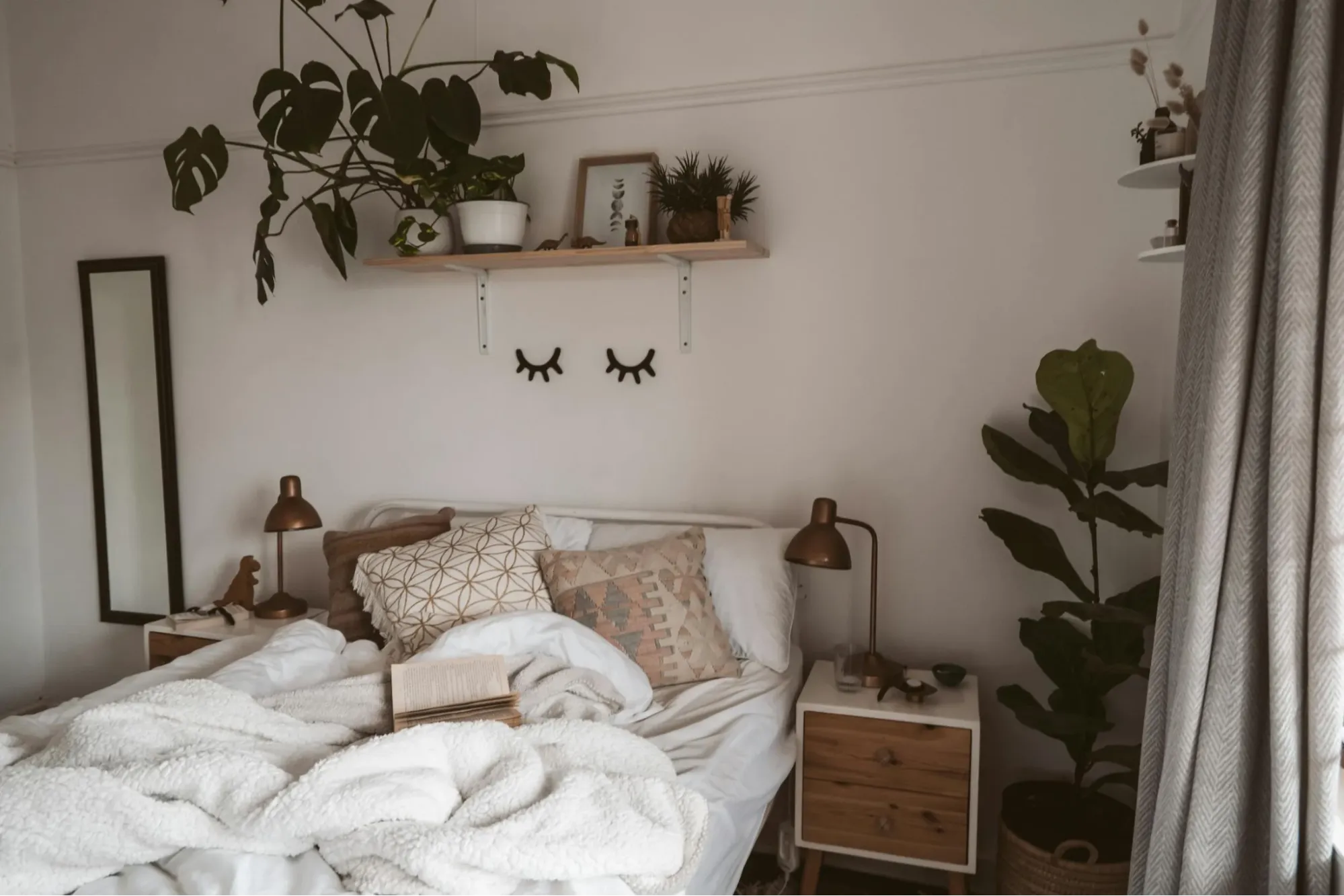
If you’re passionate about the environment, this is your chance to get creative. Introducing natural elements into your bedroom can make the space feel more serene and balanced.
Adding bedroom plants for better sleep is a simple yet powerful touch. Snake plants, peace lilies, and pothos are all great choices—they’re easy to care for and known for their air-cleansing properties. Try placing them on your bedside table or windowsill, or consider hanging small pots by the window to save space while adding a charming touch of nature. This approach also works well for small bedroom designs, helping to bring freshness without overcrowding the space.
6. Block out unwanted noise
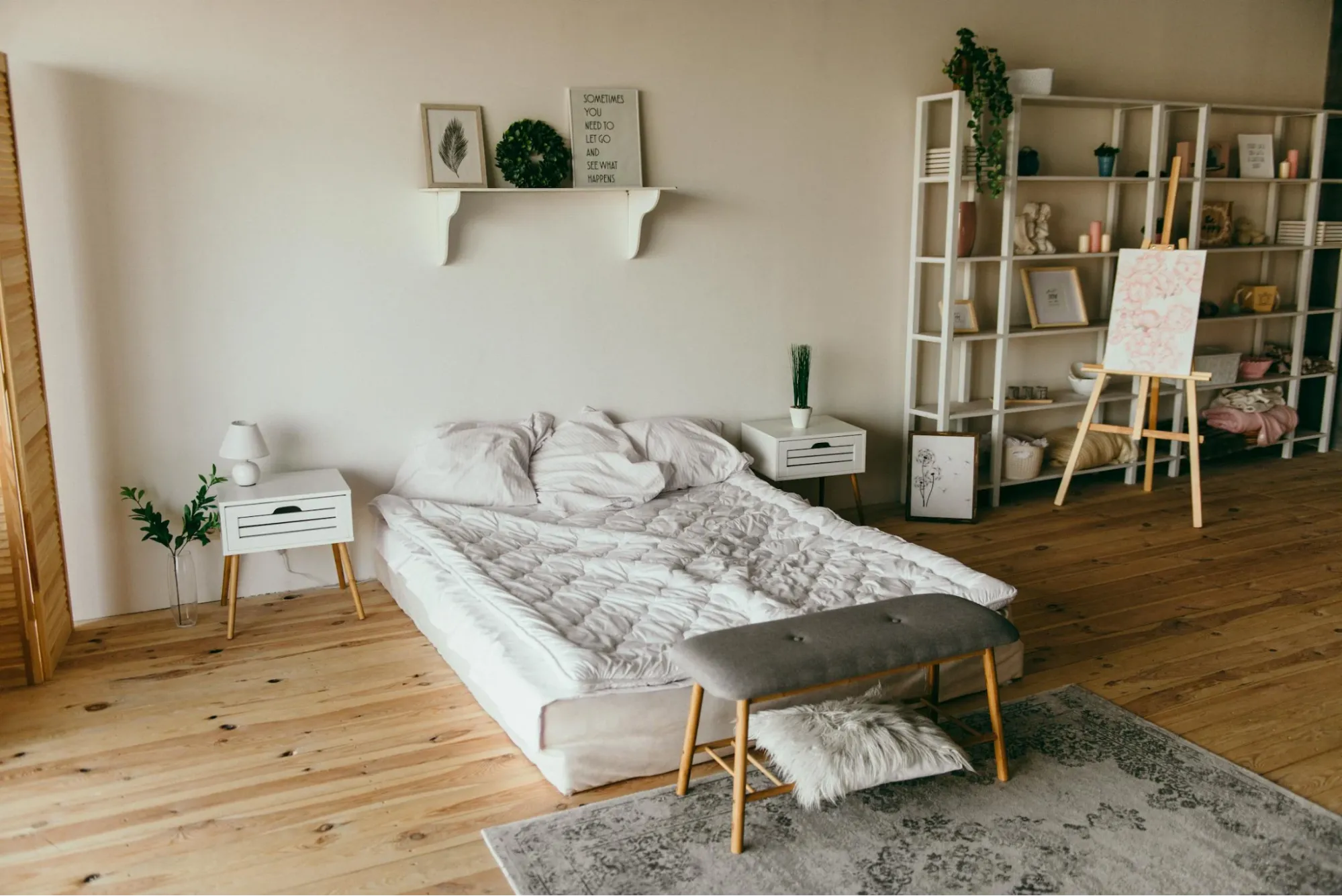
Did you know that soft furnishings like rugs, curtains, cushions, and even fabric wall hangings can help reduce noise? Place larger upholstered pieces such as a plush armchair or a cushioned bench against external or shared walls to significantly dampen sound. Bookshelves stacked with books also make great sound barriers.
If you’re dealing with noise from the street or nearby neighbours, thick blackout curtains or a white noise machine can be a game-changer, helping to mask unwanted sounds.

7. Optimize furniture and layout
A clutter-free space not only helps clear your mind but also encourages relaxation, an essential element in creating your bedroom sanctuary. When arranging your furniture, aim for simplicity and functionality. If blocking out unwanted noise is your goal, see if you can achieve this with your existing pieces to maintain a simple bedroom layout.
Keep the area around your bed open to allow easy movement and create a serene atmosphere. Opt for smart storage solutions, like under-bed drawers or wall-mounted shelves, to prevent the room from feeling overcrowded.
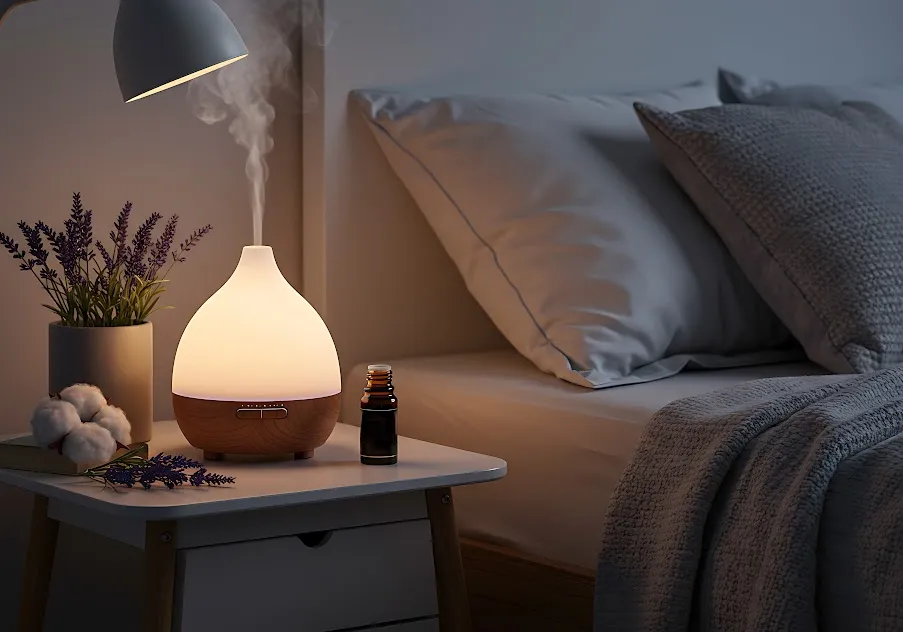
8 Use Scent In Your Furniture
To promote a good night’s sleep and keep your space smelling fresh, try placing dried lavender or scented sachets in your drawers or wardrobe. Each time you open them, a gentle fragrance fills the air. You can also add a few drops of essential oil to cotton balls and tuck them into a decorative box or a quiet corner of your closet for a calming effect.
Linen sprays are perfect for refreshing your bedding or soft furnishings, like upholstered headboards, keeping them beautifully fragrant. For something a little more constant, a reed diffuser on a shelf or tucked inside a cabinet can offer a subtle, continuous scent without adding clutter.
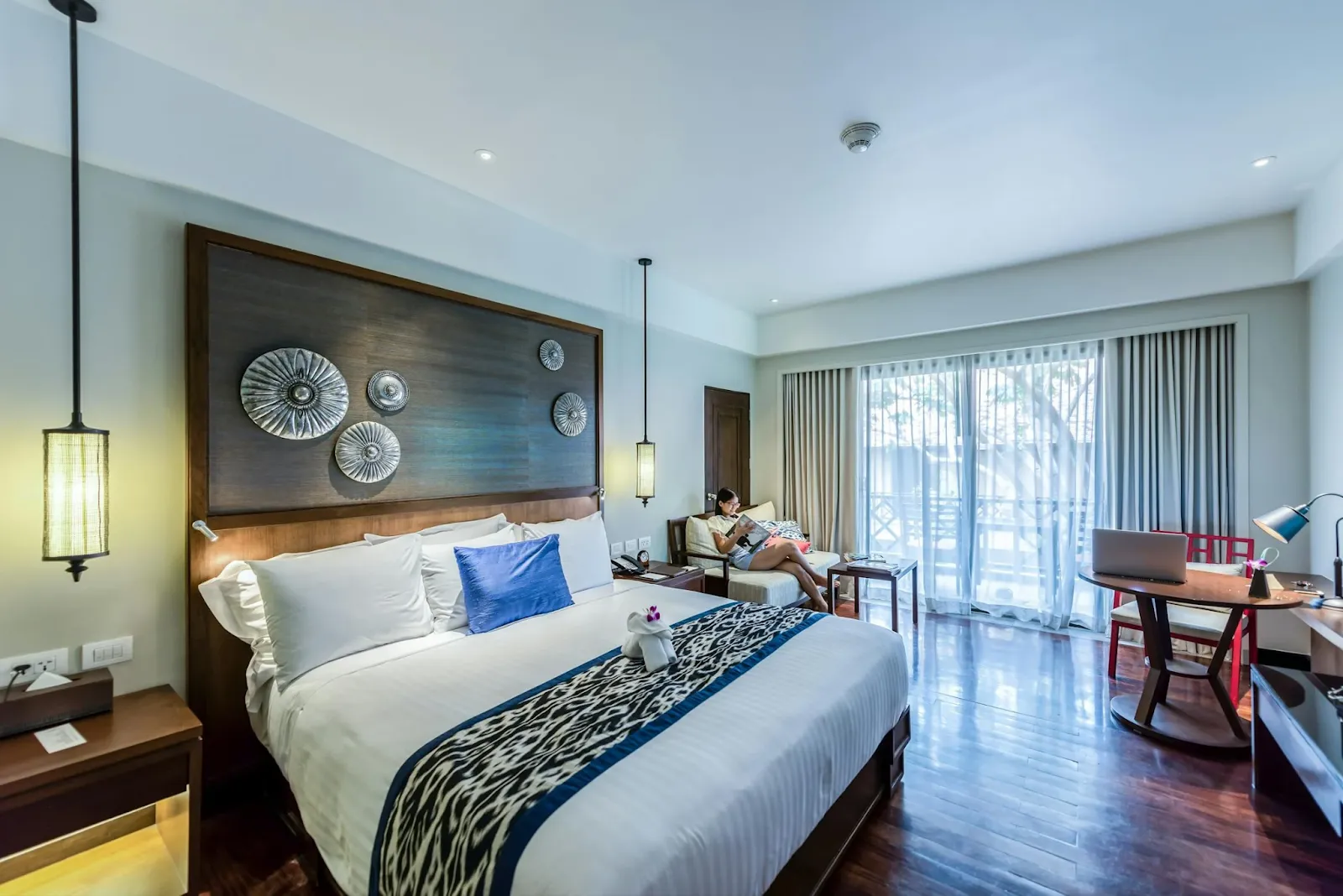
9. Invest in the right window treatments
Earlier, we touched on the benefits of using curtains to enhance your sleep. To take your restful space to the next level, think about window treatments that offer privacy, light control, and comfort. The best bedroom designs for sleep often include layered curtains or blinds that offer privacy, block out harsh light, and help muffle outside noise. Below are some other options:
- Thermal or insulated blinds: Keep your room cool in summer and cozy in winter by regulating the temperature.
- Privacy shades or frosted window films: Maintain your privacy while still letting natural light pour in.
- Cellular shades: Trap air to improve insulation, offering both soundproofing and temperature control for a deeper, more restful sleep.
- Roller blinds or shutters: Block out all light at night to create a perfectly dark and peaceful environment.
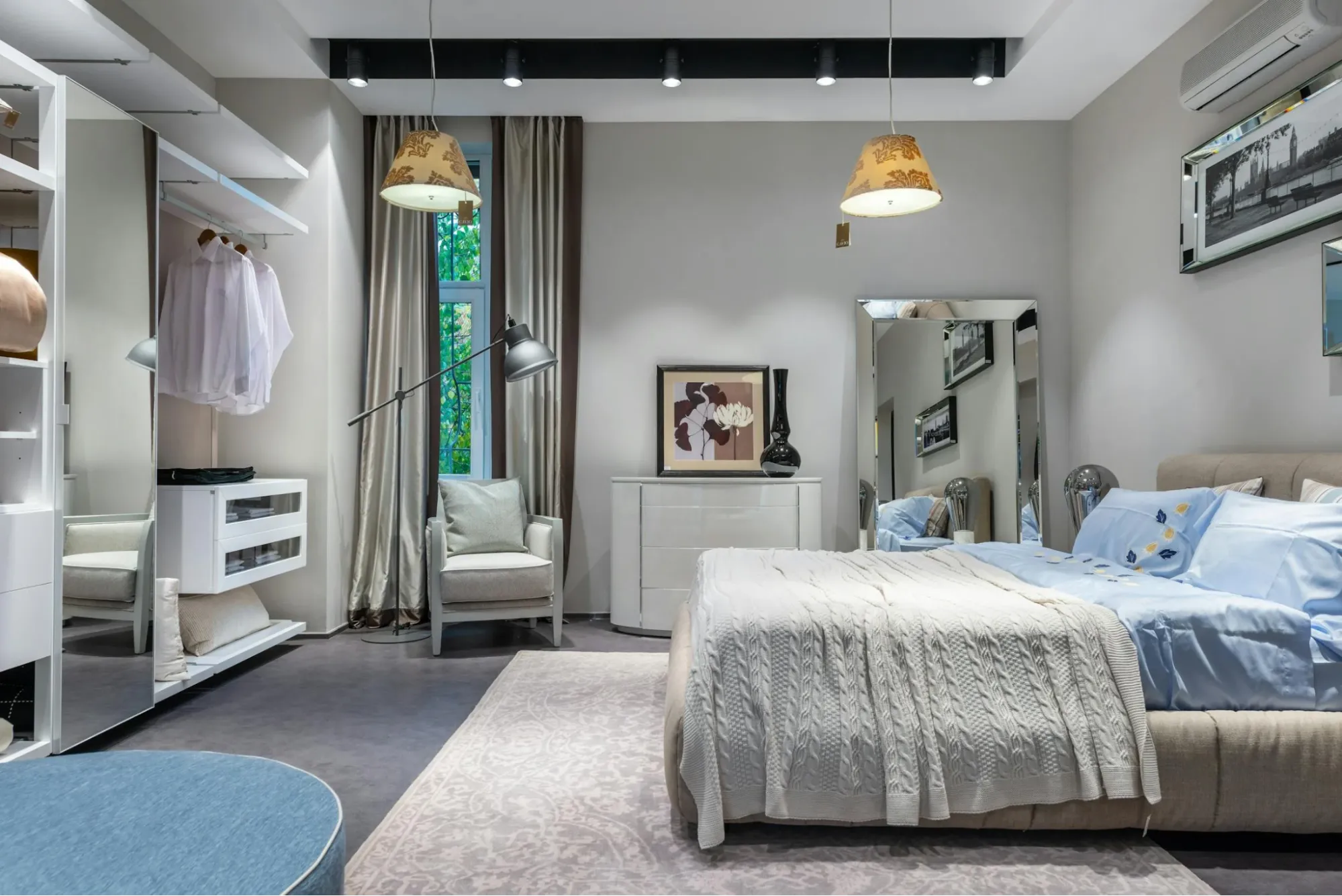
10. Control the room temperature
By carefully adjusting your room’s temperature with these simple design tips, you can create a perfect setting for relaxation and sleep.
- In the warmer months, a fan or air conditioner can keep things cool and breezy.
- During colder seasons, a quality heater ensures warmth without making the room stuffy.
- Rugs or carpets are great for holding onto heat, adding both comfort and a cozy atmosphere.
- Choose bedding made from breathable materials like cotton to help maintain an even temperature throughout the night.
- A ceiling fan is ideal for consistent air circulation, keeping your space pleasant all year round.
- Reflective window films can help keep the warmth in during winter and out during summer, ensuring comfort in every season.
Conclusion
Creating a bedroom that promotes restorative sleep goes beyond just choosing a comfy mattress. It’s about designing a space that feels calm, inviting, and tailored to help you unwind. Soothing wall colours, luxurious bedding, touches of nature, and calming scents all work together to create an environment where rest comes easily. With just a few thoughtful updates, your bedroom can transform from a simple sleeping space to a sanctuary that supports better rest and overall well-being. You can also check out this project by AND Learner, Sunali Khajuria to get inspiration for your next bedroom furniture design project.
And with that, we wrap up our guide to the top 10 bedroom design ideas for better, more restful sleep. We hope it has inspired you to create a space that truly supports your sleep.
Next Steps
If you’d like to learn more about interior design or you’re looking for some extra style, bedroom furniture, or accessory inspiration, make sure you check out the AND Academy blog for more articles like this one!
In case you need further assistance, here are some resources to consider:
- Watch this session by Snehanshu Mukherjee, Founding Partner at T.E.A.M and Mansi Almadi, an Interior Designer at Studio Lotus
- Talk to a course advisor to discuss how you can transform your career with one of our courses.
- Check out our Interior Design courses – all courses are taught through live, interactive classes by industry experts.
- Take advantage of our scholarship and funding options to overcome any financial hurdle on the path to your career transformation.
Note: All information and/or data from external sources is believed to be accurate as of the date of publication.

